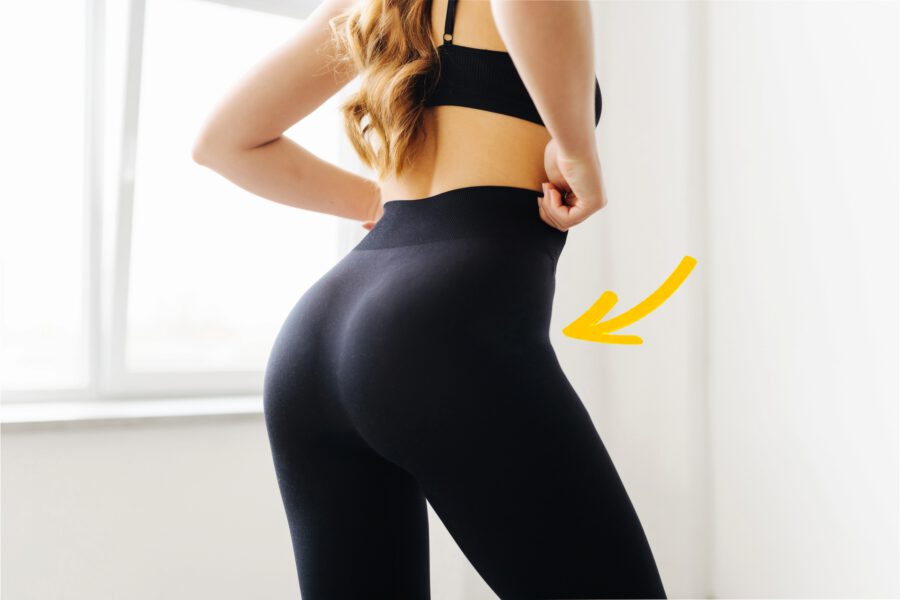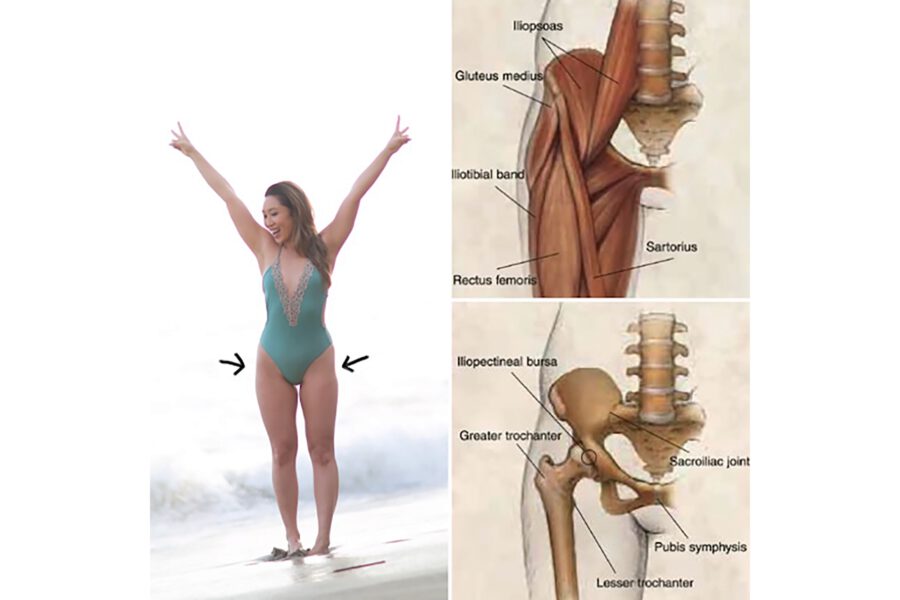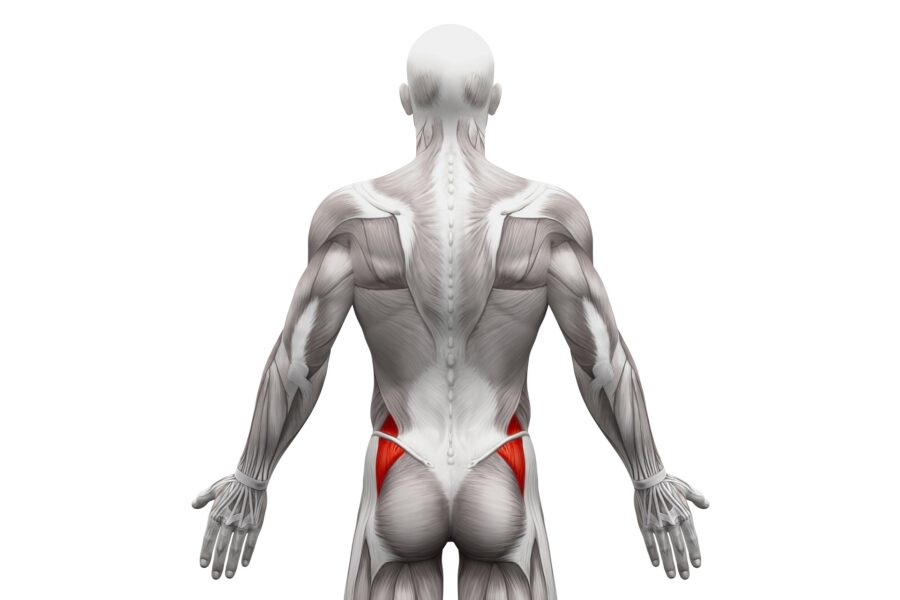Hip Dips: Causes, Anatomy, and How to Minimize Their Appearance
Many people wonder why they have hip dips and how they can make them less noticeable. Recently, searches for “hip dips” have surged, showing that body shape curiosity and confidence go hand in hand.
Hip dips—also known as violin hips—are the natural inward curves found below your hip bones. They’re a normal part of human anatomy and depend on the shape of your pelvis and the distribution of fat and muscle around your hips.
It’s important to remember that having hip dips is completely normal. They don’t indicate poor fitness or an unhealthy body. However, if you want to smooth out their appearance, there are safe and effective ways to strengthen and tone the surrounding muscles.
However, if you aim to have more rounded hips and want to do something about your hip dips, there are exercises and a few other tips that could help lessen them and achieve your desired body goal.
Anatomy and Genetics
Hip dips are part of human anatomy and are not a medical condition. They are a natural indentation at the top of the hip bone, which can give the appearance of a dip or valley between the hip and thigh. Some people may be more prone to hip dips due to genetics, while others may develop them due to weight loss or gain.
People with high and wide hips may have greater indentations at the hips due to the angle of different structures of their hip bone.
Hip dips can also happen because of the position of the hip bone relative to your center of gravity. For example, you'll feel the hip dips more when you stand and move your hips forward. On the contrary, if you move the hips further back, you'll notice that they become less prominent.
People with significant hip dips usually have hips that tend to sway forward due to weakness of the core and tightness of the butt muscles compared to the rest of the body.
Aside from your anatomy, genetics, and possible tightness or weakness of core and butt muscles, there are other factors that can contribute to the appearance of hip dips, such as low fat distribution and low muscle mass at the hips and thigh.
Hips dips are 100% normal, and it has nothing to do with your health status. It is a misconception to associate body features as indications of your health. Hip dips are all about your natural body contours. As long as you are pain-free, hip dips are nothing to worry about.
There are natural ways to add more muscles to the outer part of your hips and achieve a more rounded lower body. You can lessen your hips' indentations, but eliminating them is impossible. As we said earlier, they are features, not a defect.
While you can't do anything about your natural hip structure, you can still perform exercises to strengthen your hip muscles for proper hip function and add more mass to your hips.
The gluteus medius is the primary muscle that lies on top of the area of the hip dip. This muscle is not as meaty as other muscles in your body hence the hip dip. However, exercising the gluteus medius and other muscles of your hips can improve their size and shape.
If you are aiming to lessen the appearance of your hip dips or achieve an hour-glass physique by sculpting your lower body, these are simple exercises that are perfect for you:
The squat is a popular functional exercise that strengthens and tones the muscles in the hips, thighs, and buttocks.
To perform a squat:
- Stand with your feet shoulder-width apart.
- Engage your core muscles and keep your back straight as you bend your knees and lower your body as if sitting back in a chair.
- Lower your body until your thighs are parallel to the ground.
- Press through your heels to straighten your legs and return to the starting position.
As you are new to squatting or have mobility issues, you can practice a more shallow squat by using a wall or a chair for support. Then, as you get stronger, you can gradually improve the depth of your squats, try a more advanced variation or add weights to challenge yourself further.
A plan you should consider:
Lunges and side lunges train your glutes, quads, and hamstrings.
To perform lunges:
- Stand with your feet hip-width apart and your hands on your hips
- Use your right foot to take a large step forward and bend your right knee to lower your body toward the ground.
- Keep your left leg straight and your left heel lifted as you descend.
- Lower your body until your right thigh is at a 90-degree angle parallel to the ground and your right knee is directly above the right ankle.
- Push through your right heel to straighten your right leg and return to the starting position.
- Repeat the movement on the opposite side by stepping forward with your left foot.
Side hip openers aka side leg lateral raises target the gluteus medius muscle and adductor muscle group.
To perform side hip openers:
- Begin on all fours.
- Engage your core muscles and keep your back straight.
- Lift your right leg to the side and keep your knee bent 90-degree angle.
- Hold this position for 2-3 seconds and slowly return to the starting position.
- Do this for 10-15 reps. Repeat the movement on your opposite leg.
To perform side leg raises:
- Lie on your right side. Your arm should be extended along the ground and your left hand at your hip.
- Keep your right leg straight, and your left leg bent with your foot resting on the ground.
- Engage your core muscle and keep your back straight.
- Lift your right leg off the ground while keeping it straight as you lift it toward the ceiling.
- Hold the position for 2-3 seconds and then slowly return to the starting position.
- Do this for 10-15 reps.
- Switch sides, and perform the exercise on your left side.
Get lean
Aside from bulking your thigh and hip muscles, you can also reduce the prominence of hip dips by getting lean. In addition, chopping off extra fats through proper diet and physical activities can help you achieve a narrow waistline and trim off love handles.
Generally, a low-calorie and high-protein diet can help you achieve fat loss with significant results if combined with regular resistance exercises.
Cardiovascular exercises and HIIT training are also excellent to help reduce the overall size of your hips and keep you in good shape by burning tons of calories.
Remember to train your core muscles too. A weak core can also contribute to excess tilting of your pelvis, further increasing the indentation in your hips. Train your core muscles at least twice a week.
Example of core workouts:
- Crunches
- Bird dog
- Planks
- Leg lifts
It is also vital to ensure proper conditioning on your glutes. A tight gluteus medius can further tilt the pelvis backward (posterior pelvic tilt), which can worsen hip dips and may also lead to back pain. Having a regular stretching routine can also help you optimize your workout and prevent injuries.
To stretch your gluteus medius:
Overall, hip dips are a natural variation in body shape and are not a cause for concern. That is why focusing on being healthy and feeling good about yourself is important, rather than conforming to social media trends.
Although there are exercises and strategies you can do to minimize hip dips, it is only possible to eliminate them partially since they are a normal part of your anatomy.


